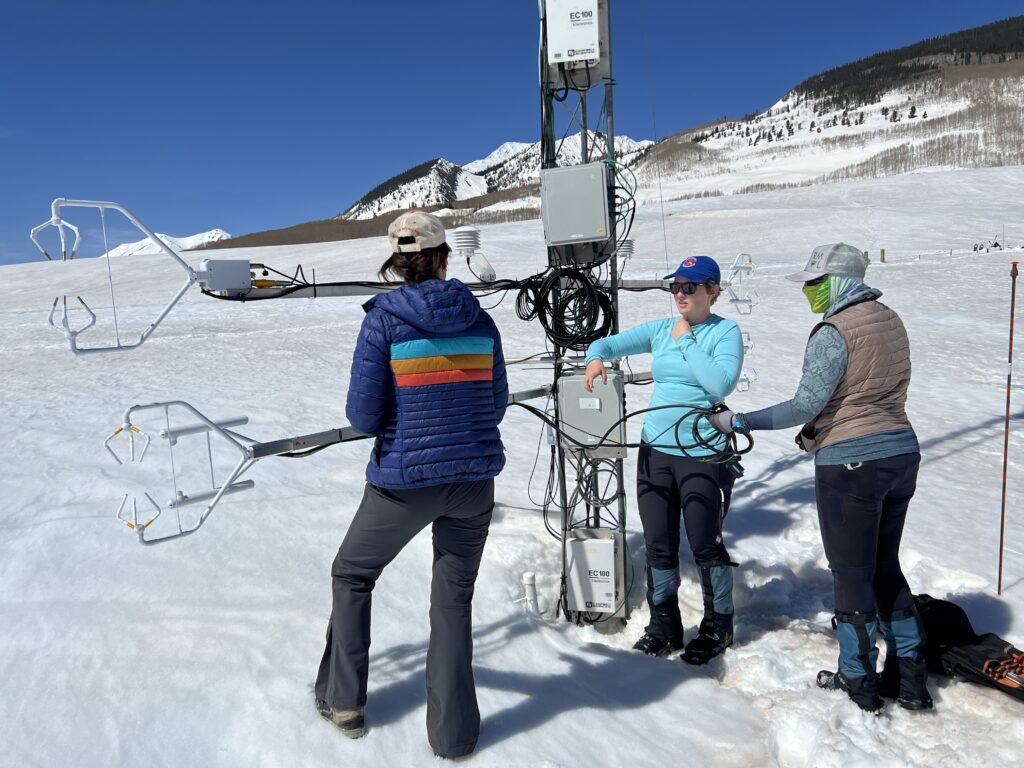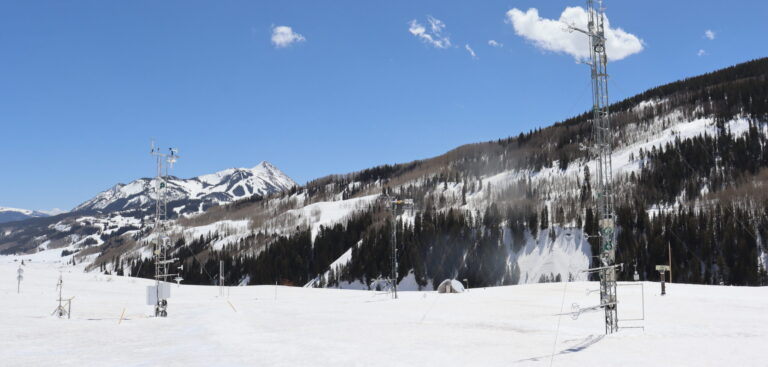Scientists have wrapped up a major field project high in the Colorado mountains that will eventually help water resource managers to better quantify critical water resources stored in mountain snowpacks. The project was led by the University of Washington and the Aspen Global Change Institute in collaboration with NCAR.
The Sublimation of Snow (SOS) project, which ran from October 2022 to May 2023, aims to advance understanding of the process of snow evaporating into the atmosphere instead of melting into water. This process has a major effect on water resources in the western USA, where runoff from mountain snowpack is needed to ensure adequate water for farms, businesses and growing numbers of residents.
To improve predictions of water availability in the spring and summer, officials must be able to quantify how much water is being lost to sublimation. The main factors are sunshine on the surface of the snow and dry winds sweeping across it.
The SOS field site was set up near the Rocky Mountain Biological Laboratory outside Crested Butte, Colorado. The site consisted of four towers, 10-20m high, loaded with instruments that collected data on wind speed, snowfall and blowing snow. This enabled the scientists to measure the depth of the snowpack, temperature of the snowpack surface and intensity of the sun.

One of the early findings is that blowing snow is sublimating higher above the snowpack than previously thought. “As the wind lofts up the loose snow on the surface of the snowpack, the sensors are showing that a portion of the blowing snow is sublimating into the air rather than falling back down,” said NCAR scientist Ethan Gutmann. “The 20m tower showed that wind is blowing plumes of snow higher than the instruments can measure, so it is likely that more sublimation is occurring even higher in the air.”
The team will further analyze the data and narrow the range of uncertainty around how much snow is sublimating. “The brighter the sun and the higher the wind, the more will be sublimated,” said Isabel Suhr, an NCAR software engineer and field technician supporting the SOS campaign. “It could be anywhere from 10-90% of total snowfall that is sublimating. We don’t really know how much.”



